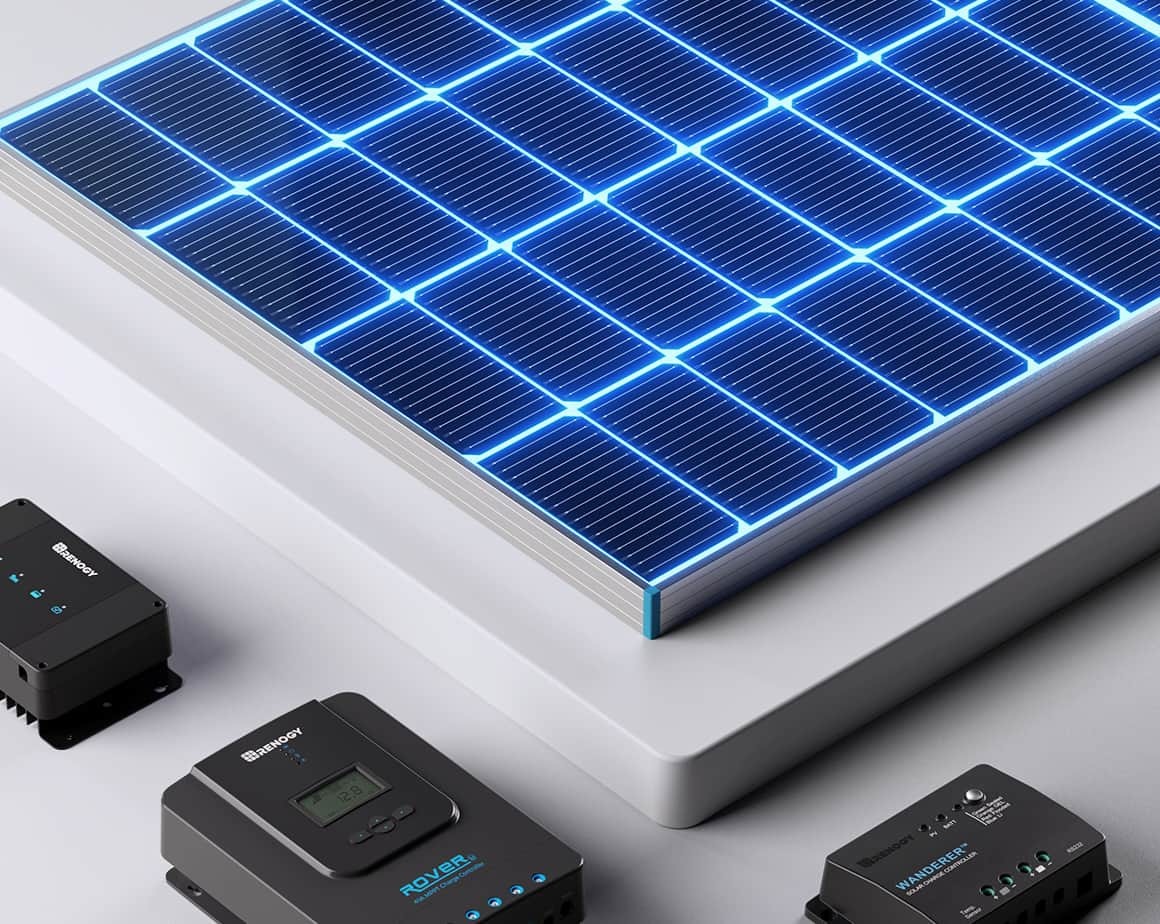Renogy N-Type Solar Panels: Superior Efficiency and Reliability
Renogy’s N-Type Solar Panels surpass traditional p-type PERC panels with their higher cell efficiency, extended lifespan, and consistent high performance, even in challenging conditions.
Increased Output and Bifacial Advantage
The N-Type Bifacial Solar Panel delivers 10% higher bifaciality and an additional 20W power output compared to conventional p-PERC panels, maximizing energy production.
Engineered for Premium Quality
Built with precision, this panel includes low-iron tempered glass, POE film, N-Type solar cells, a transparent backsheet, and a robust aluminum frame. These materials ensure unmatched durability and long-lasting performance.
Optimized for Hot Climates
Featuring a temperature coefficient of -0.29%/°C, Renogy’s N-Type panels maintain cooler operations in high temperatures, providing superior energy generation in hot climates compared to PERC panels.
Advanced 16-Busbar Technology
Equipped with 16-busbar (16BB) cell technology, these panels enhance energy conversion efficiency and improve durability by minimizing the risk of microcracks.
Reinforced Frame for Greater Durability
With an aluminum alloy frame over 1.1mm thick, this panel offers superior structural strength, outperforming competitors and withstanding harsh weather conditions.
Bifacial Power Boost
Achieving an impressive 80% bifaciality factor, this panel generates approximately 14% more power from the rear side compared to traditional PERC panels, increasing overall energy output.
Broad Charge Controller Compatibility
Renogy’s 100W 12V N-Type Solar Panels are designed with an open-circuit voltage of less than 25V, making them compatible with 99% of MPPT and PWM charge controllers.
Why Choose Renogy
Renogy continues to set the standard in solar solutions by combining advanced technology with unmatched quality, redefining what’s possible in renewable energy.
Package Includes
- 1 x 250w N-type Solar Panel
- 1 x User Manual
- 1 x Warranty Card
250 Watt TOPcon Bifacial Solar Panel
Module Performance
Max Power at STC:
250W
Module Efficiency:
21.2%
Open Circuit Voltage:
22.35V
Short Circuit Current:
13.49A
Optimum Operating Voltage:
19.52V
Optimum Operating Current:
12.81A
Maximum System Voltage:
1000VDC
Maximum Series Fuse Rating:
30A
Operating Temperature:
-40°F~194°F / -40℃~90℃
Dimensions:
1547x763x30mm/60.9x30.0x1.2in
Weight:
12.4kg/27.3lbs
opc:
Warranty
Material and workmanship warranty:
10 Years
Performance Warranty:
5 year 95% output warranty 10 year 90% output warranty 25 year 80% output warranty
Certifications
Manufactured in a Certified ISO 9001 Facility:
YES
opc:
FAQ
1.What do I need to complete my off-grid solar power system ?
A solar panel has to be connected a charge controller to regulate current, and a battery to store the electrical power. You will need adapter kit cables to wire the solar panel(s) and charge controller, and tray cables connecting the charge controller to a deep-cycle battery.
2.What does off-grid and on-grid mean?
On-grid simply means solar power equipment (array or solar panel) is connected to the electrical grid, while off-grid refers to systems that are not connected to the grid and therefore store the generated power for later use. Off-grid systems are not affected by grid blackouts.
3.Why is my solar panel under producing?
Solar panel performance may be hindered for a number of reasons. Most commonly environmental conditions such as indirect sunlight, temperature rise, cloudy sky, and dirt and stain build up on the top glass will cause a reduced power output.
4.How should I connect solar panels in my electrical circuit (series vs parallel) ?
Solar panels can be connected in series or in parallel to meet your electrical circuit size and power demand. Connecting solar panels in series will have the effect of adding up their operating voltage output, while system current output will be the same as that for one panel. While, connecting solar panels in parallel will have a different effect; individual panels operating current output will add up to be the system output current, while system output voltage will be the same as the output voltage of one solar panel. To meet the optimum power output and system rating for your power system, you can use both parallel and series connections.
5.How many solar panels do I need?
The best way to gauge how many solar panels you need, is to understand and define the power load needed from this system. Power is measured in Watts, and capacity is commonly measured in Watt-hours (multiplying power output in watts by the required number of hours of operation multiplied by a safety factor of 1.5-2). Therefore, it is wise to size your battery bank first based on the minimum required capacity, and accordingly decide how many panels or how much power input is needed.
6.What is the Benefits of Using Bifacial Solar Panels
a.Captures sunlight from both sides b.More efficient and power than monofacial panels c.Perform better in overcast weather d.Install in any direction
7.What is the meaning of 12V in the product title,Why is this value different from the voltage of the solar panel?
When you open the product page, you will see a title like "xxx Watt 12 Volt Monocrystalline Solar Panel". The "12V" here does not refer to the voltage of this solar panel (VOC or VMP), but to the fact that one xxxW solar panel is suitable for 12V system (i.e. a 12V battery).Therefore, these are two completely different values with different meanings.



























































